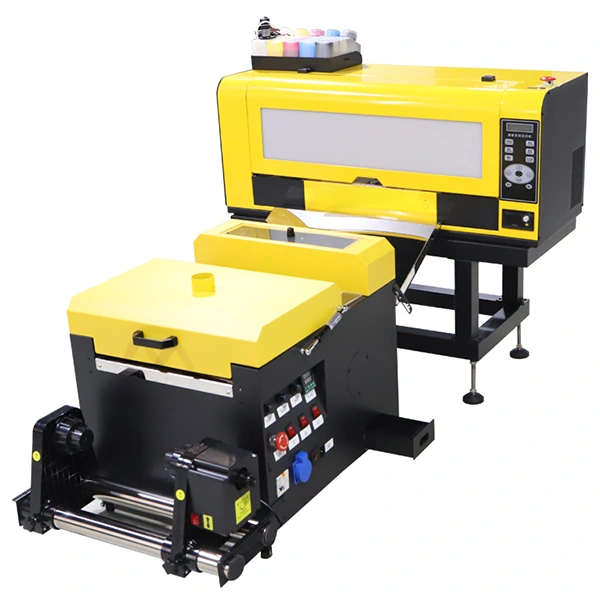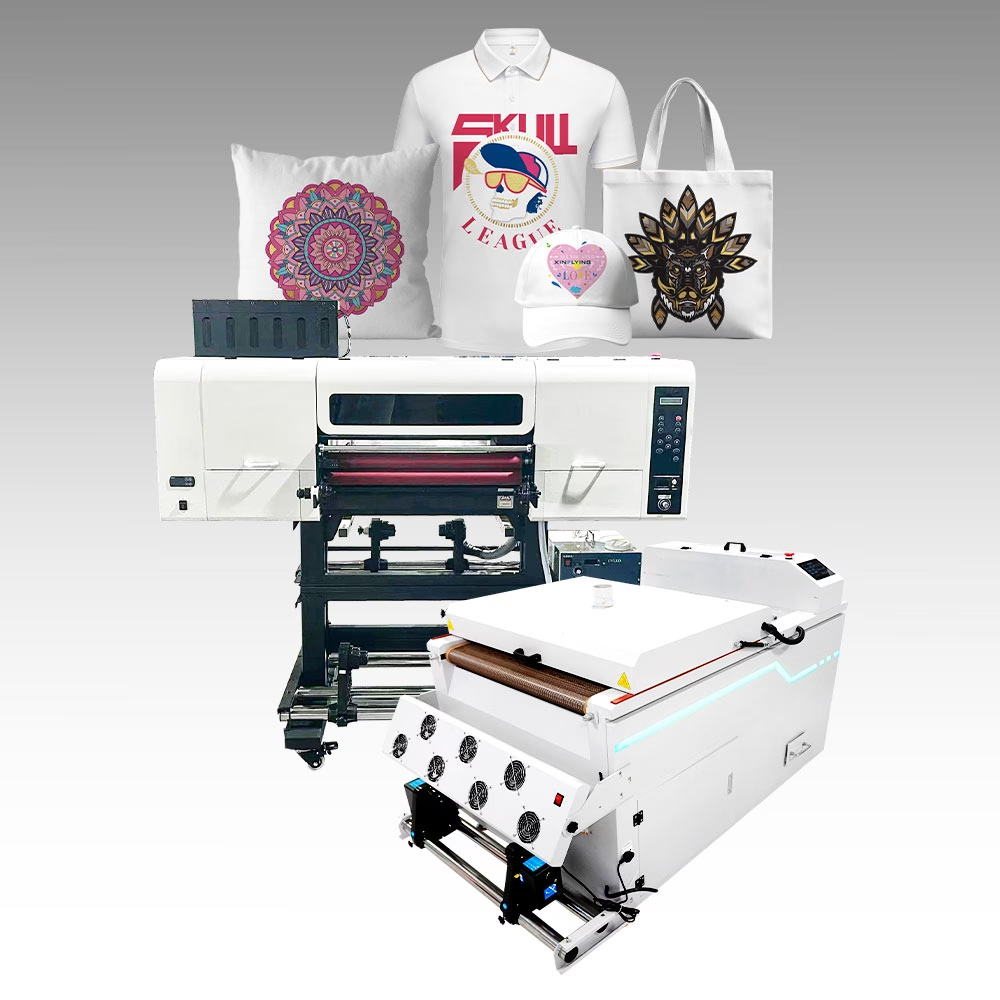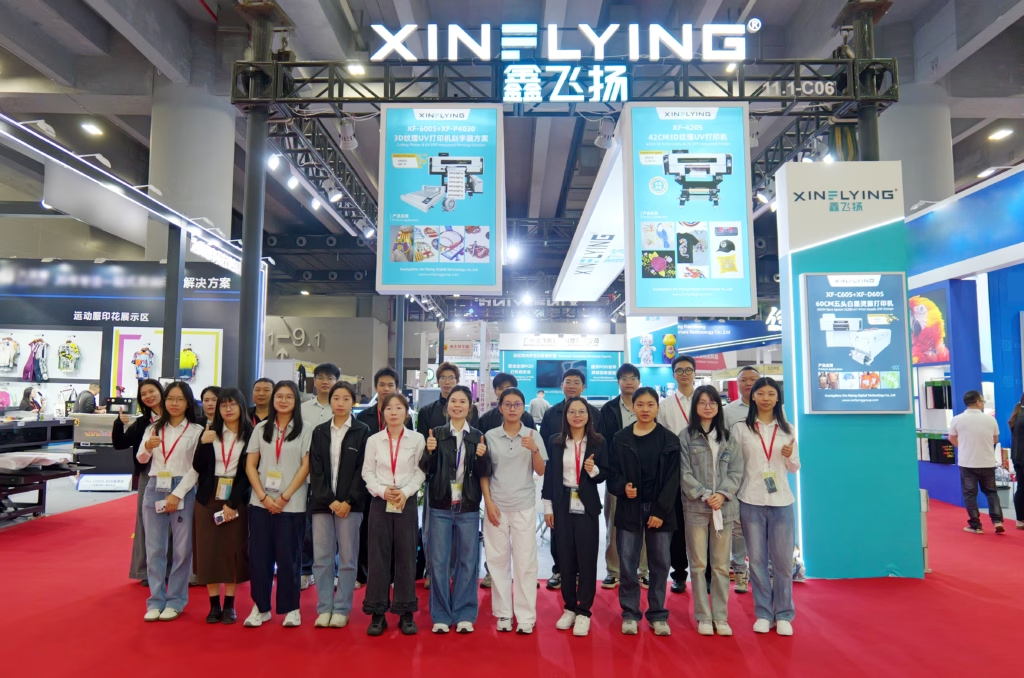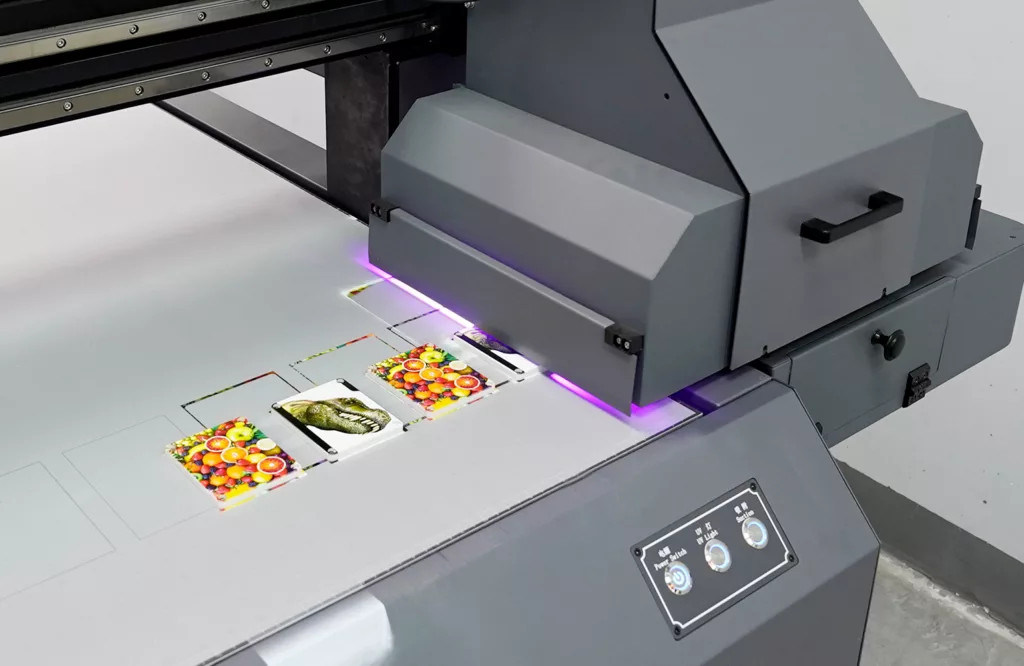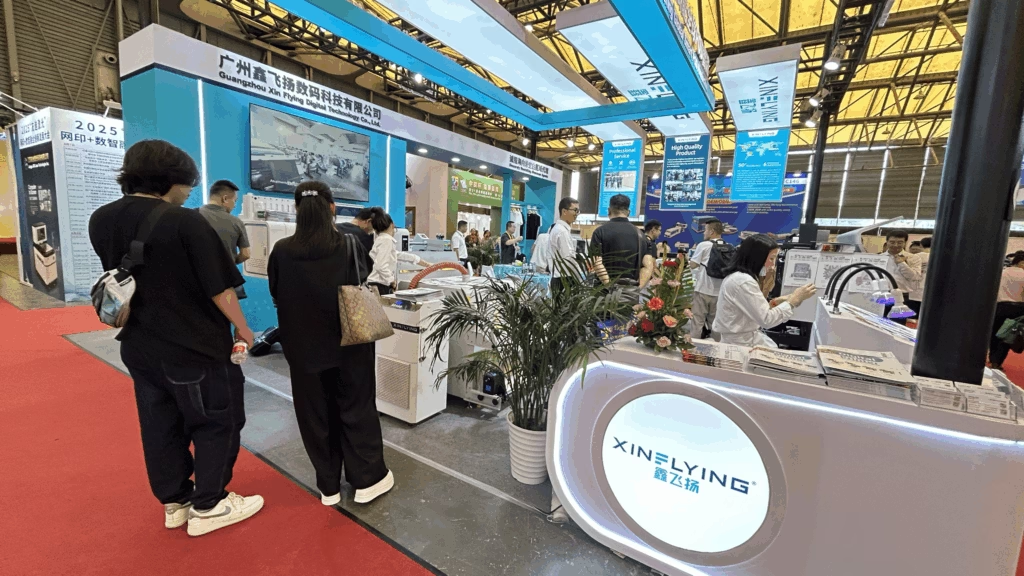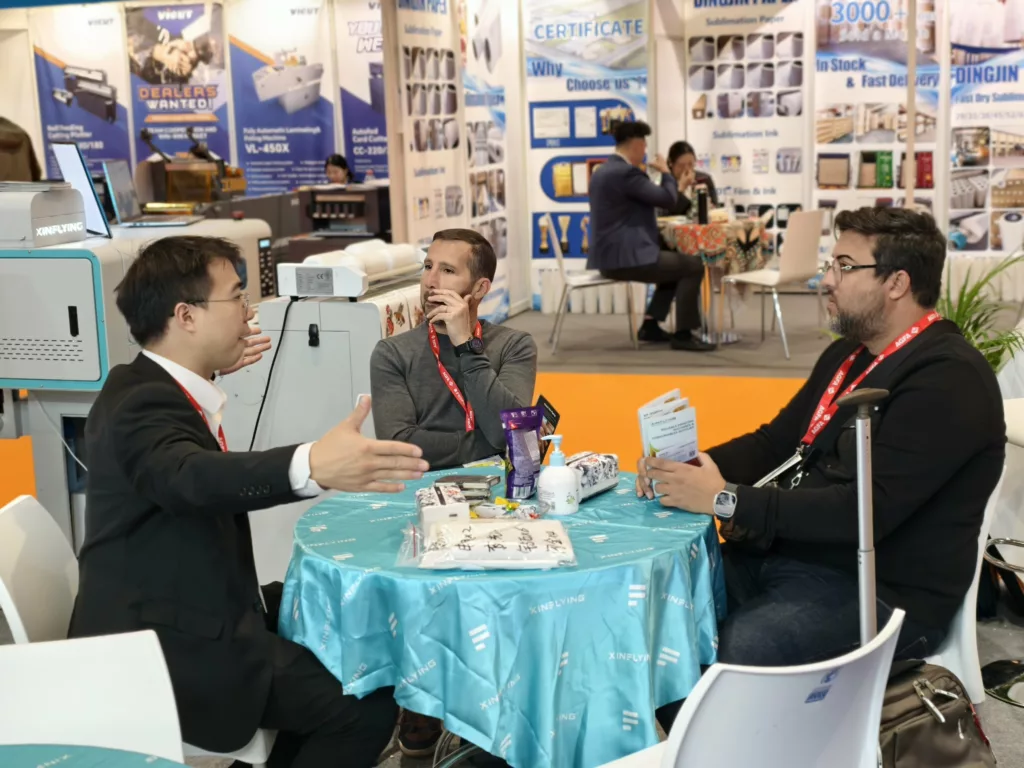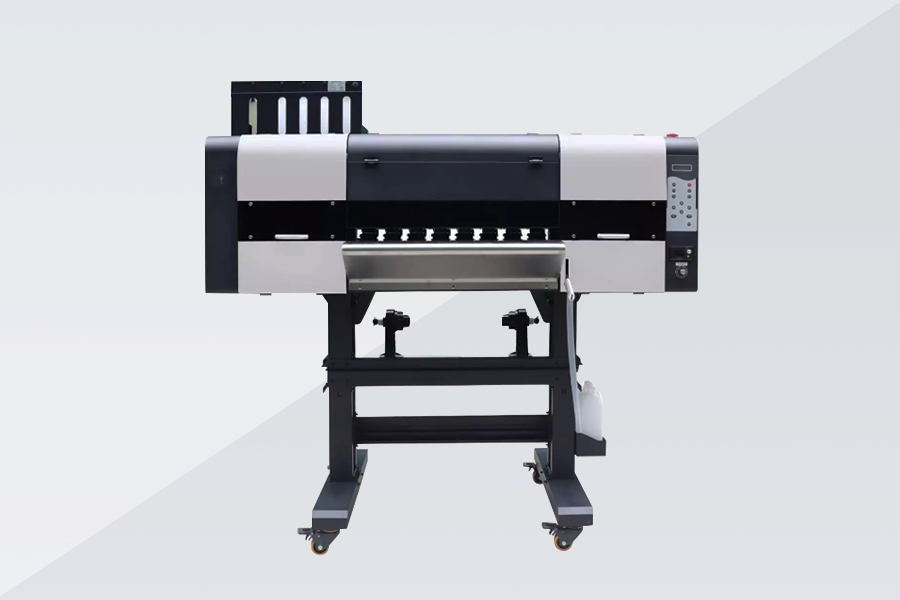
DTF-tulostus, Lyhyesti suoraviivaiseen tulostukseen, on uraauurtava menetelmä, joka on mullistanut tulostusteollisuuden. Se tarjoaa a monipuolinen ja tehokas Ratkaisu mallien siirtämiseen suoraan kankaisiin ja erilaisiin materiaaleihin. Toisin kuin perinteiset menetelmät, DTF-tulostus eliminoi välivaiheiden, kuten näytön valmistuksen tai lämmönsiirtolevyjen tarpeen, mahdollistaa nopeita ja tarkkoja tuloksia.
Tämä kattava opas on suunniteltu esittämään aloittelijat maailmaan DTF tulostin. Oletko harrastaja, joka tutkii uusia luovia keinoja tai pienyrityksen omistajaa, joka haluaa laajentaa tuotelinjaa, DTF -tulostuksen perusteiden ymmärtäminen avaa mahdollisuuksien maailman. Työprosessista sen sovelluksiin ja etuihin, Tämä opas tarjoaa sinulle perustavanlaatuisen tiedon aloittaaksesi DTF -tulostusmatkan. Niin, Sukellustaan ja tutkitaan DTF -tulostamisen jännittävää valtakuntaa yhdessä.
Mikä on DTF-tulostus?
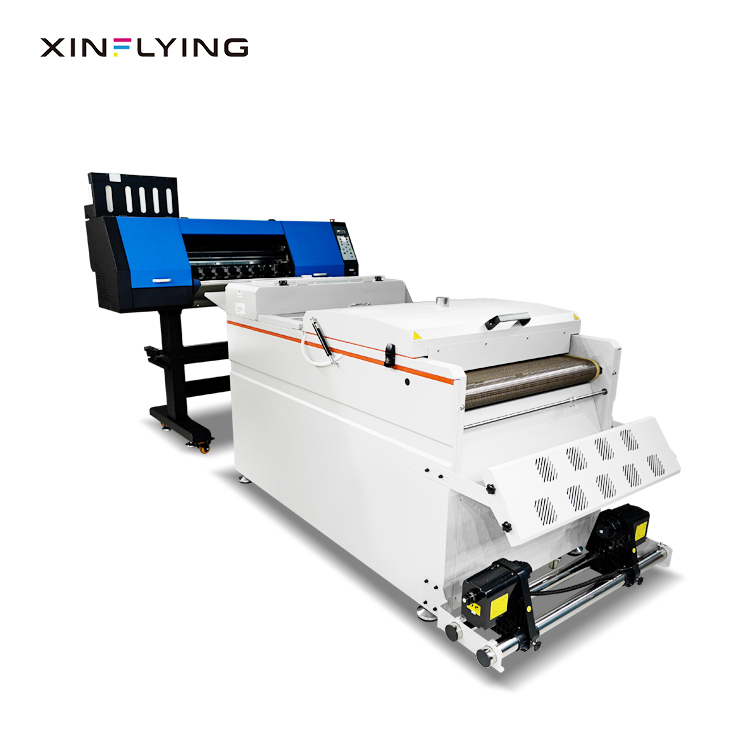
DTF-tulostus, tai suoratulostus elokuvalle, on moderni tulostustekniikka, joka mahdollistaa Suunnittelun suora siirto kankaisiin ja erilaisiin substraatteihin. Se käyttää erikoistunutta prosessia, joka sisältää liiman käyttöä, lämmitys, ja paine luoda eläviä ja kestäviä tulosteita.
Yksi keskeinen ero DTF -tulostuksen ja muiden tulostusmenetelmien välillä, kuten näytön tulostus tai lämmönsiirtotulostus, Onko värierottelun poistaminen ja kyky saavuttaa värilliset tulosteet ilman kerrostamista. DTF -tulostus mahdollistaa monimutkaiset ja monimutkaiset mallit, joissa on vilkkaat värit, Tekemällä siitä suositun valinnan mukauttamiseen ja yksityiskohtaiseen grafiikkaan. Lisäksi, DTF -tulostuksen monipuolisuus ulottuu kankaiden ulkopuolelle sisällyttämään materiaaleja, kuten keramiikka, puu, metalli, ja enemmän, laajentamalla sovelluksiaan eri toimialoilla.
DTF -tulostuksen sovellukset
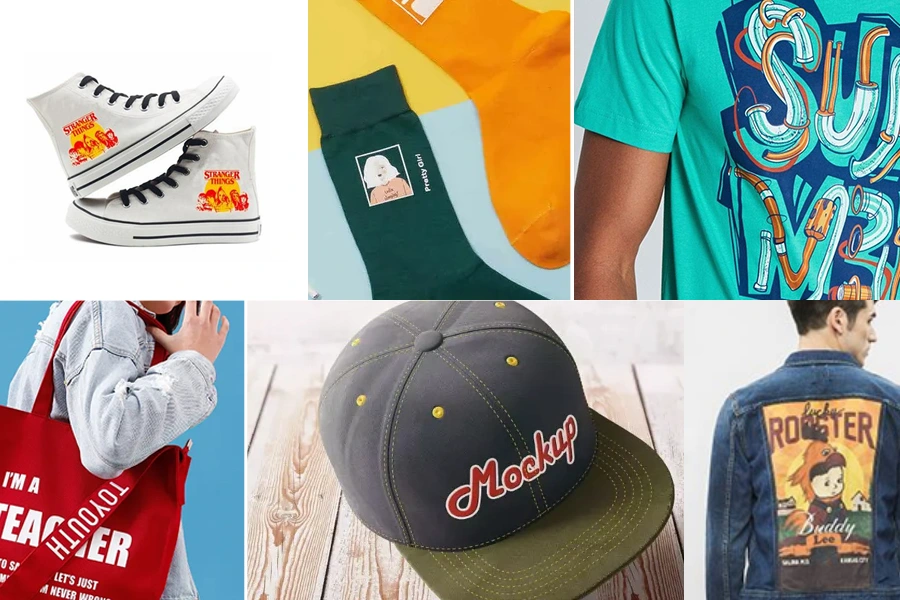
DTF -tulostus on löytänyt laajoja sovelluksia lukuisilla toimialoilla, kiitos monipuolisuus ja kyky korkealaatuisten tulosteiden tuottaminen monille materiaaleille. Tässä on joitain avainalueita, joilla DTF -tulostusta käytetään:
1. Muoti- ja vaatekappale
DTF -tulostus on saanut merkittävää suosiota muoti- ja vaateteollisuudessa. Se tarjoaa mahdollisuuden tulostaa monimutkaisia malleja, kuviot, ja logot suoraan vaatteisiin, mukaan lukien t-paidat, huppareita, leggingsit, ja enemmän. DTF -tulosteiden elinvoimaiset värit ja erinomainen kestävyys tekevät niistä ihanteellisia mukautettujen vaatteiden ja ainutlaatuisten muotikappaleiden luomiseen.
2. Kodin sisustus
DTF -tulostus on myös tehnyt merkinnän kodinsisustusmaailmassa. Se mahdollistaa kohteiden, kuten tyynyjen, mukauttamisen, verhot, pöytäliinat, ja verhoilu henkilökohtaisilla malleilla, teksti, tai kuvat. Tämän avulla yksilöt voivat lisätä henkilökohtaisen kosketuksen asuintiloihinsa ja luoda visuaalisesti upeita sisätiloja.
3. Kampanjatuotteet
DTF -tulostus on tehokas menetelmä mainostuotteiden luomiseen. Se antaa yrityksille mahdollisuuden tulostaa logonsa, iskulauseet, ja brändäyselementit eri esineistä, mukaan lukien laukut, korkit, mukeja, ja puhelinkotelot. DTF -tulostuksen monipuolisuus varmistaa, että mainostuotteet erottuvat ja jättävät pysyvän vaikutelman vastaanottajille.
4. Räätälöinti
Yksi DTF -tulostuksen merkittävistä eduista on sen mukauttamisominaisuudet. Sen avulla yksilöt ja yritykset voivat luoda ainutlaatuisia, ainutlaatuiset tuotteet tulostamalla henkilökohtaiset mallit, nimeä, tai valokuvia. Räätälöityistä lahjoista henkilökohtaisiin tavaroihin, DTF -tulostus tarjoaa loputtomia luovia mahdollisuuksia.
DTF -tulostuksen monipuolisuus ulottuu moniin materiaaleihin, joihin se voi tulostaa. Lisäksi kankaita kuin puuvillaa, polyesteri, ja sekoituksia, DTF: tä voidaan käyttää sellaisissa materiaaleissa keramiikka, puu, metalli, lasi, ja jopa nahkaa. Tämä laajentaa DTF -tulostuksen mahdollisia sovelluksia vaatteiden ulkopuolella ja kattaa tuotteet, kuten mukit, laatat, opasteet, henkilökohtaisia lahjoja, ja enemmän.
Kyvyssä saavuttaa elinvoimaiset värit, monimutkaiset yksityiskohdat, ja erinomainen kestävyys erilaisissa materiaaleissa, DTF-tulostamisesta on tullut erittäin haluttu tulostusmenetelmä eri aloilla, Tarjoaa loputtomia mahdollisuuksia mukauttamiseen ja luovuuteen.
Kuinka DTF -tulostus toimii?
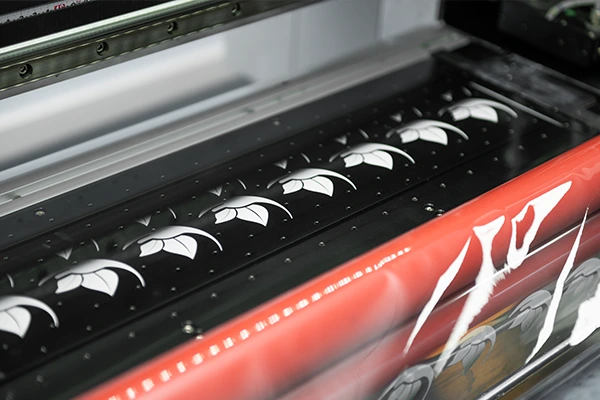
Jos olet aloittelija, joka on kiinnostunut sukeltamaan DTF -tulostuksen maailmaan, Tässä on vaiheittainen opas, joka auttaa sinua aloittamaan:
1. Kerää välttämättömät laitteet ja materiaalit
- DTF-tulostin: Sijoita luotettavaan DTF.
- DTF -musteet: Käytä eko-liuottoa tai vesipohjaista DTF -musteet yhteensopiva tulostimen kanssa.
- DTF elokuva: Saada DTF -siirtoelokuvat Sopii tulostimellesi toimimaan mallin operaattoreina.
- Liima -arkit: Hanki lämpöaktivoidut liima-arkit, jotka toimivat hyvin DTF-tulostuksella.
- Lämmönpuristuskone: Osta korkealaatuinen lämpöpuristimen kone, joka pystyy tarjoamaan tasaisen lämmön ja painetta.
2. Suunnittelun luominen ja säätö
Luo tai muokkaa graafista suunnittelua. Varmista, että se on sopivassa muodossa tulostamiseen, kuten JPEG tai PNG. Säädä sitten väriprofiili ja varmista, että kuvan resoluutio on sopiva selkeisiin ja teräviin tulosteisiin.
3. Esikäsittely
Kankaan tulostamiseen, Esikäsittele materiaali esikäsittelyliuoksella, joka on erityisesti muotoiltu DTF-tulostukseen. Tämä auttaa parantamaan musteen tarttuvuutta ja värin elinvoimaa.
4. Tulostusasennus
Lataa DTF -siirtokalvo tulostimeen, Varmista, että se on oikein kohdistettu ja määritä tulostusasetukset, kuten musteen tiheys, tulostusresoluutio, ja kuivausaika, Perustuu DTF -tulostimen valmistajaSuositukset.
5. Tulostus
Lähetä suunniteltu kuva DTF -tulostimeen ja aloita tulostusprosessi. Varmista, että muste on parannettava riittävästi ennen kuin kosketat tulostettua kalvoa tahrojen tai vaurioiden estämiseksi.
6. Siirtoprosessi
- Leikkaa painettu malli DTF -siirtoelokuvasta, Jätä pieni reuna reunojen ympärille.
- Aseta lämpöaktivoitu liima-arkki lämpöpuristimeen.
- Aseta painettu kalvo liima -arkin päälle, varmistaa, että se on linjassa suunnittelun kanssa.
- Levitä lämpöä ja painetta lämmönpuristinlaitteella, Erityisten materiaalien suositeltujen lämpötila- ja aika -asetusten noudattamisen jälkeen.
7. Kuori ja viimeistellä
Lämpöpuristimen jälkeen, Kuori kalvo varovasti liimasta. Varmista, että muotoilu tarttuu kunnolla kohdemateriaaliin. Anna lopputuotteen jäähtyä ennen käsittelyä tai jatkokäsittelyä.
Seuraamalla tätä vaiheittaista opasta, Olet hyvin matkalla DTF -tulostamisen hallitsemiseen. Muista perehtyä DTF -tulostimen valmistajien antamiin erityisiin ohjeisiin optimaalisten tulosten varmistamiseksi. Harjoitella, kokeilu, Ja huomio yksityiskohtiin auttaa sinua tarkentamaan taitojasi ja saavuttamaan korkealaatuiset DTF-tulosteet.
Vinkkejä onnistuneeseen DTF -tulostukseen
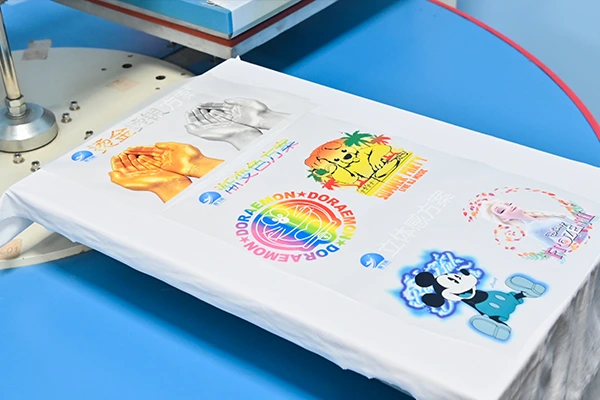
Auttaa sinua saavuttamaan optimaaliset tulokset DTF -tulostuksella, Tässä on joitain käytännön vinkkejä ja parhaita käytäntöjä:
1. Optimaalinen lämpötila, Paine, ja ajoitus
- Varmista, että lämpöpuristimet asetetaan suositeltu lämpötila liima -arkin määrittämä ja siirtokalvovalmistajat. Tämä lämpötila varmistaa liiman ja musteen siirron asianmukaisen aktivoinnin.
- Säätää painetta Lämpöpuristimessa tulostamasi paksuuden ja tyypin mukaan. Riittävä paine varmistaa asianmukaisen tarttumisen ja musteen tunkeutumisen.
- Noudata käyttämiäsi materiaalien suositeltuja aikatauluja. Oikea ajoitus varmistaa riittävän lämmönaltistuksen aiheuttamatta vaurioita substraatille tai tulostukselle.
2. Oikea kalvon kohdistus
- Kohdista painettu elokuva tarkasti liima -arkin kanssa siirtoprosessin aikana. Virheellinen kohdistus voi johtaa vinoihin tai vääristyneisiin tulosteisiin.
- Käytä rekisteröintimerkkejä tai kohdistusoppaita yhdenmukaisen ja tarkan sijoittelun varmistamiseksi.
3. Testaa tulosteita ja värikalibrointia
- Suorita testitulosteet näytemateriaaleista ennen Jatkaminen täyden tuotannon kanssa. Tämän avulla voit hienosäätää parametreja, kuten värikyllästys, terävyys, ja kuvan paikannus.
- Kalibroi tulostin säännöllisesti ylläpitääksesi tarkkoja värin toistoa ja kuvanlaatuista.
4. Käsittely ja varastointi
- Kahva DTF -siirtoelokuvat puhtaalla, Kuivat kädet sormenjälkien tai tahrojen välttämiseksi, jotka voivat vaikuttaa tulostuslaatuun.
- Myymälä käyttämättömät siirtoelokuvat viileässä, kuiva paikka, poissa suorasta auringonvalosta, kosteutta, ja äärimmäiset lämpötilan vaihtelut.
5. Yleisten haasteiden vianmääritys
- Epäselvät tulosteet: Varmista, että kuvan resoluutio riittää haluttuun tulostuskokoon. Matalan resoluution kuvat voivat johtaa pikselaatioon tai epäselvyyteen.
- Epäjohdonmukaisuus: Säädä lämmön puristuskoneen paine varmistaaksesi yhdenmukaisen ja tasaisen paineen koko suunnittelussa.
- Muste: Varmista, että muste on kuivattu täysin ennen siirtoprosessin jatkamista. Lisää kuivausaikaa tarvittaessa.
6. Huolto ja puhdistus
- Puhdista tulostin säännöllisesti estämään musteen tukkeutumista tai tukkeutumista, jotka voivat vaikuttaa tulostuslaatuun.
- Pidä lämmönpuristimet puhdistamalla säännöllisesti ja tarkistamalla lämmityselementit ja paineasetukset.
Muistaa, harjoittelu ja kokeilu ovat avain DTF -tulostuksen hallitsemiseen. Tarkkaile ja dokumentoida asetuksiasi ja tuloksia luotettavan prosessin kehittämiseksi johdonmukaisten tulosten saavuttamiseksi. Pysy ajan tasalla DTF -tulostimen valmistajan ohjeiden kanssa ja hae tukea verkkoyhteisöiltä tai foorumeilta oppiaksesi muilta’ kokemukset. Ajan ja harjoituksen myötä, Tarkastella taitojasi ja saavutat onnistuneet ja korkealaatuiset DTF-tulosteet.
DTF -tulostuksen edut
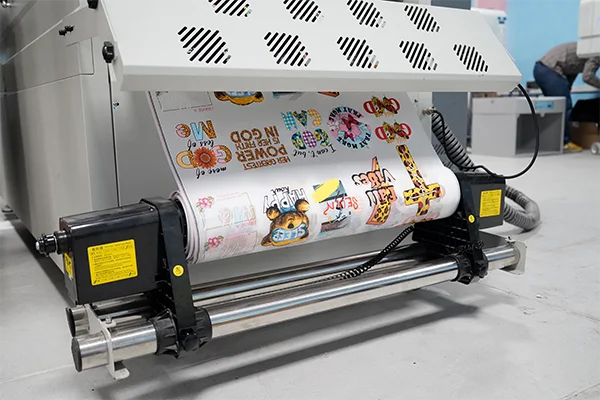
DTF -tulostus tarjoaa useita etuja muihin tulostusmenetelmiin verrattuna, Tekemällä siitä ensisijainen valinta monille yrityksille ja yksityishenkilöille. Tässä on DTF -tulostuksen tärkeimmät edut:
- Erinomainen tulostuslaatu: DTF toimittaa terävää, vilkkaat tulosteet monimutkaisilla yksityiskohdilla ja kaltevuuksilla.
- Kestävyys: DTF-tulosteet kestävät haalistumista, halkeilua, ja kuorinta, Pitkäaikaisen laadun varmistaminen.
- Kustannustehokkuus: DTF on taloudellinen pienille tai keskisuurille tulosteille, Asennuskustannusten poistaminen.
- Nopeampi käännös: DTF mahdollistaa nopeamman tuotannon ilman näytön valmistelua tai kerrostamista.
- Ympäristöystävällinen: DTF -tulostus vähentää jätteitä ja kuluttaa vähemmän vettä, kestävyyden edistäminen.
- Monipuolisuus: DTF voi tulostaa erilaisille materiaaleille, Luovien mahdollisuuksien laajentaminen.
DTF -tulostuksen poikkeuksellinen tulostuslaatu, kestävyys, kustannustehokkuus, nopeammat tuotanto -ajat, ympäristöystävällisyys, ja monipuolisuus tekee siitä ihanteellisen valinnan yrityksille ja yksityishenkilöille. Onko henkilökohtaisia vaatteita, myynninedistämistuotteet, tai räätälöity kodinsisustus, DTF -tulostus tuottaa erinomaisia tuloksia tehokkaasti.
Rajoitukset ja näkökohdat
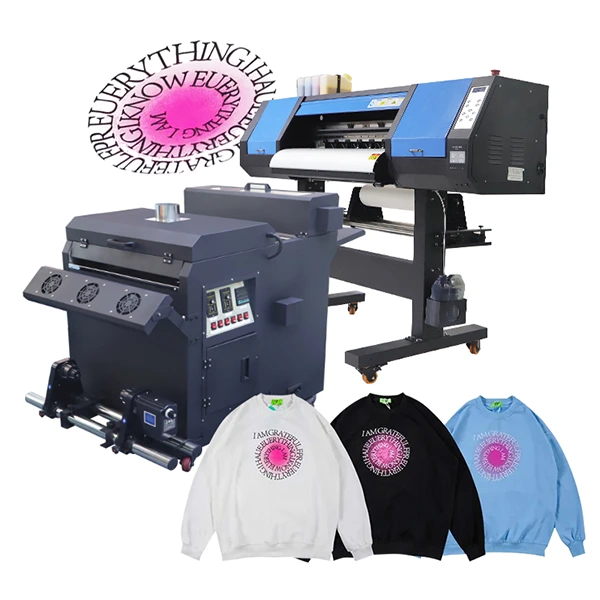
Harkitse näitä tekijöitä arvioitaessa DTF -tulostuksen rajoituksia ja näkökohtia:
- Skaalautuvuus: DTF, kuivaus, ja jokaisen mallin siirtäminen erikseen.
- Alkuinvestointi: DTF -tulostus vaatii etukäteen sijoittamisen laitteisiin, mukaan lukien sopiva tulostin ja lämpöpuristimen, joka olisi otettava huomioon budjetissa.
Avaintekijät, jotka on otettava huomioon päätettäessä, sopiiko DTF -tulostus tiettyihin projekteihin tai yrityksiin:
- Tulostusmäärä: DTF, Vaikka muut menetelmät voivat olla tehokkaampia suurille tilavuuksille.
- Monimutkaisuus ja värien elinvoima: DTF on erinomainen monimutkaisten kuvioiden ja elinvoimaisten värejen toistamisessa eri materiaaleilla.
- Budjetti: Arvioi DTF -tulostukseen liittyvät kustannukset, mukaan lukien laitteet, muste, ja materiaaleja, varmistaa, että se vastaa käytettävissä olevia resursseja.
- Kääntymisaika: DTF -tulostus tarjoaa nopeamman tuotannon ja lyhyemmät läpimenoajat verrattuna tiettyihin perinteisiin menetelmiin.
- Ympäristönäkökohdat: DTF-tulostus on ympäristöystävällistä, koska se eliminoi näytönvalmistuskemikaalien tarpeen ja vähentää jätteitä.
Harkitsemalla näitä tekijöitä huolellisesti, Voidaan määrittää, onko DTF -tulostus oikea valinta heidän erityistarpeisiinsa. On tärkeää punnita projektivaatimusten ja resurssien edut ja rajoitukset tietoiseen päätökseen.
Johtopäätös
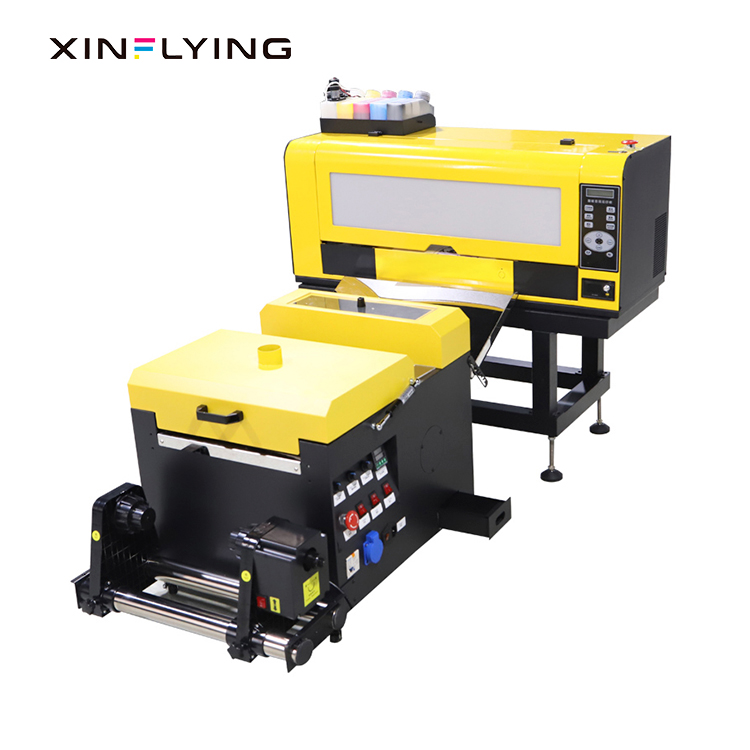
Tiivistettynä, DTF -tulostus tarjoaa luovien mahdollisuuksien ja räätälöinnin maailman. Monipuolisuudellaan, Erinomainen tulostuslaatu, ja kustannustehokkuus pienille tai keskipitkille painotuotteille, Siitä on tullut suosittu tulostusmenetelmä eri aloilla. Oletko suunnittelija, yrityksen omistaja, tai DIY -harrastaja, Sukellus DTF -tulostusmaailmaan voi avata mahdollisuudet ainutlaatuisille ja henkilökohtaisille luomuksille. Hyödynnä tämä innovatiivinen tekniikka ja tutki DTF -tulostuksen loputtomia potentiaalia.



























